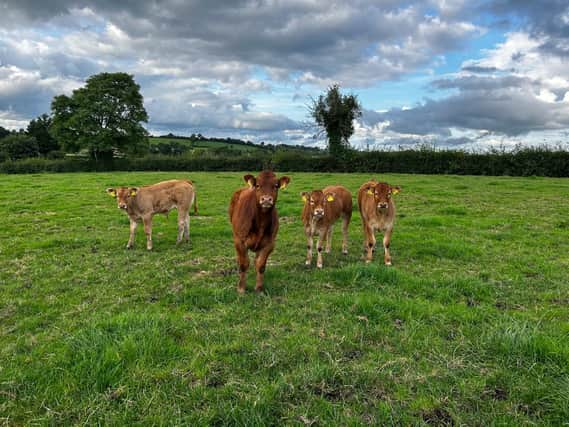AgriSearch's 'Autumn options' webinars


The first webinar looked at autumn options for beef farmers. Nigel Gould, a Beef & Sheep Advisor from CAFRE, emphasised the importance of using a fodder budget to ensure you have sufficient stocks of silage and also the benefit of getting silage analysed. Options that beef farmers could take if they did not have sufficient silage stocks to see them through the winter were also discussed.
Dr Francis Lively from AFBI used the results of research in Northern Ireland and further afield to examine options for farmers who had silages of sub-optimal quality. He outlined the importance of making the best use of what remains of the grazing season and the benefits of extending the grazing season with lighter stock. He also looked at recent research from the United States on the impact of early weaning of suckler calves. Early weaning would enable suckler calves to graze longer into the autumn.
Advertisement
Advertisement
Finally David McKinstry a beef farmer and veterinary surgeon discussed the animal health challenges that livestock might face this autumn including parasites, pneumonia and grass tetany. He emphasised the importance of working with your vet and developing a health plan for your farm.
The second webinar looked at autumn options for dairy farmers. The first speaker was Dr Sinclair Mayne who addressed the subject of silage quality. On the positive side, with the dry weather in the late spring many excellent first cut silages were made. However, from late June onwards the wet weather has meant that silage making has been a major challenge, resulting in poor quality second cut silages and very limited opportunity for third cut on some farms. This will have a significant impact on milk production this winter. Each unit decline in D value % equals 0.3 – 0.4 litres / day less milk per cow. If silage is wet and poorly fermented, intakes will decline with further reduction in cow performance.
Sinclair emphasised the importance of planning a winter feed strategy based on silage quality and analysis. First cut silage should be prioritised for early lactation cows. Milk yields are likely to be lower with second cut silage as a result of lower ME value and this needs to be factored into financial budgets this winter. Added to this is the challenge of the milk price to concentrate cost ratio. At present a litre of milk will only buy around 0.82kg concentrate compared to 1.12 kg in the previous winter.
Martin Reel a technologist from the CAFRE business team looked at options for mitigating the impact of lower milk prices. While input costs increased significantly last year milk prices kept pace with this. We are now in a situation where input prices remain high but milk prices have fallen dramatically. This will lead to significant cashflow pressures on dairy farms.
Advertisement
Advertisement
Martin outlined the importance of a pro-active approach to managing cash flow and establishing your own monthly cash flow position. CAFRE have a cash flow tool on their website which farmers can use. Seek professional advice were needed from your CAFRE advisor, accountant/consultant or rural support and engage with your bank manager at an early stage if you will need additional financial support to get through the winter.
The final speaker on the dairy webinar was Dr Mark Little, a Veterinary Manager for Fane Valley. He said that the nutritional status of dairy cows is closely linked to the maintenance of an optimal immune function and health. Poor nutrition during the dry period and early lactation results in lower hormone levels which can lead to less strong heats, delayed ovulation and lower conception rates. The issue of a lower energy intake is particularly important for energy balance during early lactation when cows can go into negative energy balance. Negative energy balance can be either reducing energy output or increasing energy intake in early lactation.
Mark cautioned against cutting out vaccines as a means of cost saving, as this can have severe consequences.
Recordings of both webinars are available from the AgriSearch YouTube channel, and a copy of the slides can be found on the AgriSearch website.